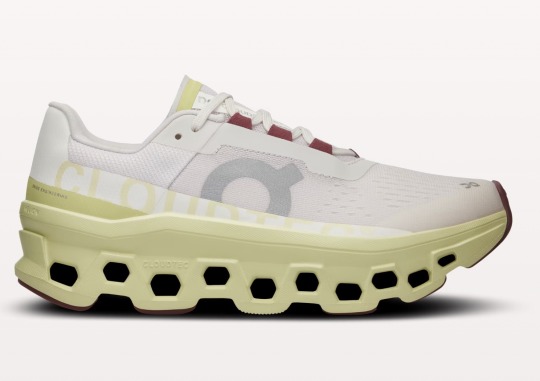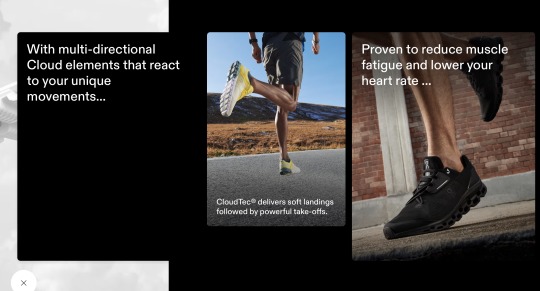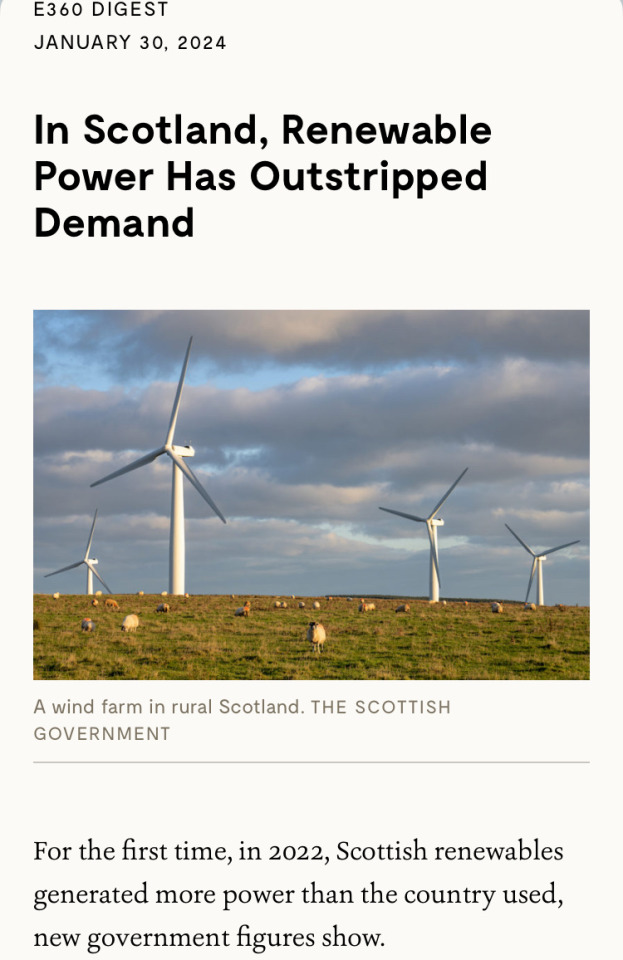#technological solutions
Explore tagged Tumblr posts
Text
Visual Diary 1: Design Leadership
“Design Leadership takes a human-centered approach to making our lives better, faster, more convenient, and future focused…” We read that “human centered” means to develop and create solutions that are empathetic to the human needs; products that will benefit humans and our daily lives.
The first product that came to mind was On Running shoes. They create change for humanity, civic engagement, innovation, and for the world. Their goal with their products is to get people moving, and they are constantly working and creating products that benefit the human body while having a positive impact on the environment. When it comes to innovation their main three focuses are fossil-fuel materials, design for clarity, and circular business materials.



3 notes
·
View notes
Text
Balancing Privacy and Community in Shared Offices in Kakkanad
Introduction
Shared office spaces, or coworking spaces, have become increasingly popular in Kakkanad, reflecting a global trend. These spaces offer a flexible work environment that supports various professionals, from freelancers to startups. However, balancing privacy and community within these spaces is a challenge that needs strategic design and policy considerations.
Understanding the Need for Privacy and Community
Privacy
Privacy is essential for individuals to focus on tasks that require deep concentration, handle sensitive information, and maintain personal space. In a shared office, privacy can be perceived in two ways:Physical Privacy: The ability to work without physical interruptions. Informational Privacy: Ensuring that one's work-related information and activities are not exposed to others without consent.
Community
A sense of community in a shared office space fosters collaboration, networking, and a feeling of belonging. It can lead to spontaneous idea exchange and a supportive work environment. Community is built through:
Social Interactions: Regular interactions with other members. Shared Goals and Values: A common understanding and alignment of work culture and ethics.
Design Strategies for Balancing Privacy and Community
Layout and Zoning
Quiet Zones: Designate areas specifically for quiet work. These zones should be equipped with soundproofing materials and designed to minimize visual distractions.
Collaborative Spaces: Create open areas where members can gather, interact, and collaborate. These spaces should be inviting and equipped with comfortable seating arrangements.
Private Offices and Pods: Offer private offices or phone booths where individuals can work without interruptions or conduct private meetings.
Furniture and Fixtures
Adjustable Furniture: Use furniture that can be easily rearranged to accommodate different working styles and needs.
Partitions: Employ movable partitions to create semi-private spaces within larger open areas.
Acoustic Panels: Install acoustic panels to reduce noise and enhance sound privacy.
Policy and Cultural Initiatives
Clear Guidelines
Noise Policies: Implement and enforce noise policies to maintain a quiet environment in designated areas. Privacy Rules: Set clear rules regarding the use of private spaces and handling of sensitive information.
Community Building
ActivitiesRegular Events: Organize social and professional events to encourage interaction and networking. Feedback Mechanisms: Establish regular feedback channels to understand members' needs and concerns regarding privacy and community.
Technological Solutions
Booking Systems: Implement online booking systems for private rooms and pods to ensure availability and manage usage. Access Control: Use access control systems to restrict entry to private areas, ensuring that only authorized individuals can enter.
Case Study: Kakkanad's Shared Office Spaces
Several shared office spaces in Kakkanad have successfully implemented strategies to balance privacy and community. For instance, XYZ Coworking Space offers
Dedicated Quiet Zones:
Specific areas designated for focused work, with soundproofing and strict noise policies. Vibrant Community Areas: Open spaces with comfortable seating, where members can interact and collaborate. Private Meeting Rooms: Multiple private meeting rooms that can be booked in advance, ensuring availability for confidential discussions.
Conclusion
Balancing privacy and community in shared office spaces is essential for creating an environment that fosters productivity and collaboration. By employing thoughtful design strategies, clear policies, and technological solutions, shared office spaces in Kakkanad can provide the best of both worlds. The key is to remain adaptable and responsive to the evolving needs of the members, ensuring that both privacy and community thrive in harmony.
0 notes
Text
BIM Solutions Provider Company in Hyderabad, India

Architude is a BIM solutions provider company, that creates unique and innovative 3-D modeling designs for the construction of different types of structures.
0 notes
Text

Empowering Change through Bio-Inspired Technological Evolution
Xenesis pioneers a new frontier of innovation, seamlessly blending Nature Intelligence with cutting-edge Artificial Intelligence to transcend conventional limitations. Our mission is to harness the transformative power of nature-infused technology, unlocking unparalleled opportunities for progress. Through biomimicry and advanced technological solutions, Xenesis redefines what's possible across industries. By drawing inspiration from the natural world, we strive to create sustainable solutions that address global challenges. With Xenesis, we embark on a journey towards a future where the harmony between nature and technology catalyzes unprecedented advancements, shaping a better world for generations to come.
To know more, please visit @ https://www.xenesis.bio/technology
Email: [email protected]
0 notes
Text
#Software Development Solution#Custom Software Development#Dedicated Software Developers#Technological Solutions#custom software development company#Cost-effective Software Development
1 note
·
View note
Text
"As the world grows “smarter” through the adoption of smartphones, smart fridges, and entire smart houses, the carbon cost of that technology grows, too.
In the last decade, electronic waste has become one of the fastest-growing waste streams in the world.
According to The World Counts, the globe generates about 50 million tons of e-waste every year. That’s the equivalent of 1,000 laptops being trashed every second.
After they’re shipped off to landfills and incinerated, the trash releases toxic chemicals including lead, cadmium, arsenic, mercury, and so much more, which can cause disastrous health effects on the populations that live near those trash sites.
Fortunately, Franziska Kerber — a university student at FH Joanneum in Graz, Austria — has dreamed up a solution that helps carve away at that behemoth problem: electronics made out of recyclable, dissolvable paper.
On September 11, Kerber’s invention “Pape” — or Paper Electronics — earned global recognition when it was named a national winner of the 2024 James Dyson Awards.

When she entered the scientific competition, Kerber demonstrated her invention with the creation of several small electronics made out of paper materials, including a fully-functional WiFi router and smoke detector.
“Small electronic devices are especially prone to ending up in household waste due to unclear disposal systems and their small size, so there is significant potential to develop a more user-friendly end-of-life system,” Kerber wrote on the James Dyson Award website.
“With this in mind, I aimed to move beyond a simple recycling solution to a circular one, ensuring long-term sustainability.”
Kerber’s invention hinges on crafting a dissolvable and recyclable PCB board out of compressed “paper pulp.”
A printed circuit board (PCB) is a board that can be found in nearly all modern electronic devices, like phones, tablets, and smartwatches.
But even companies that have started incorporating a “dissolution” step into the end life of their products require deconstruction to break down and recover the PCB board before it can be recycled.
With Kerber’s PAPE products, users don’t need to take the device apart to recycle it.
“By implementing a user-friendly return option, manufacturers can efficiently dissolve all returned items, potentially reusing electronic components,” Kerber explained.
“Rapidly advancing technology, which forms the core of many devices, becomes obsolete much faster than the structural elements, which are often made from plastics that can last thousands of years,” Kerber poses.
PAPE, Kerber says, has a “designed end-of-life system” which anticipates obsolescence.
“Does anyone want to use a thousand-year-old computer?” Kerber asks. “Of course not. … This ensures a sustainable and reliable system without hindering technological advancement.”"
-via GoodGoodGood, September 13, 2024
#ewaste#e waste#e waste recycling#e waste management#e waste solutions#paper#sustainability#green tech#tech news#sustainable technology#recycling#good news#hope
586 notes
·
View notes
Text
Charcoal-like Substance Can Clean Industrial Pollution by Converting Toxic Heavy Metal into Essential Nutrient https://www.goodnewsnetwork.org/charcoal-like-substance-can-clean-industrial-pollution-by-converting-toxic-heavy-metal-into-essential-nutrient/

Researchers from the University of Waterloo have discovered that a special form of charcoal is highly effective at absorbing chromium and transforming it from a toxic industrial waste form into the form seen in nutritional supplements.
Chromium is a heavy metal that exists in two forms. One form, chromium(III), is a safe micronutrient that our body needs. The other, chromium(VI), is a dangerous carcinogen linked to ovarian, lung, and liver cancer, and reproductive problems. The dangerous form is usually created during industrial processes such as leather tanning, stainless steel production, and mining, but it can also occur naturally in the presence of manganese minerals.
Biochar, a form of charcoal produced by heating agricultural waste without oxygen, is being studied as a potential tool for cleaning up chromium pollution at industrial sites, using the natural filtering ability of organic carbon
#good news#environmentalism#science#green technology#technology#biochar#environmental remediation#environment#environmental contamination#pollution solutions
73 notes
·
View notes
Text
I don't know if it's even intended to Be funny, but "zoom and enhance, if that were even a real thing (which it isn't)" is a tmbg lyric that always makes me smile.
#can't tell if it's the narrator likening technology that doesn't exist in reality#to their own lack of solutions to their problems. like yeah I could zoom and enhance to see the bigger picture - if that even Existed.#or jl coming in to be a pedant on his own song.#or it's not a comparison and the narrator is stopping in their thoughts to do that.#tmbg#they might be giants
28 notes
·
View notes
Text

🌾🍚🧬 A new strain of rice offers hope for drought-stricken communities in Chile! Chilean scientists are trialing the “Jaspe” rice strain, described as more environmentally conscious, “less-thirsty,” and “climate-smart.” Trials have also proven the strain to be high-yield with the right growing method, producing nearly ten times more than a conventional rice field!
#good news#crops#climate#climate change#agriculture#climate innovation#climate solutions#rice#plant science#drought#climate resilience#science#climate science#climate research#environment#south america#chile#food tech#food technology#food security#food systems#farming#climate adaptation#hope#hopepunk#hopecore
23 notes
·
View notes
Text
can someone inject RvB directly into my brain please
#i dont want to get up to get my headphones and i want to watch it#the only solution is to develop technology that allows me to put a pure concentrated form of it into my head#theta thoughts#rvb#reddin and bluein
23 notes
·
View notes
Text
Generative AI has transformed industries worldwide, with capabilities that range from content creation to data analysis. Yet, not every industry has welcomed this technology with arms wide open.
The United States Patent and Trademark Office (USPTO) has taken a quite cautious approach: it has banned nearly all internal use of GenAI tools due to concerns over security, bias, and unpredictability. This decision underscores the tension between innovation and regulation in the rapidly evolving AI landscape.
34 notes
·
View notes
Text
Hello Tumblr please help me my wallpaper thingy suddenly disappeared and I don't know how/ where to get it back ): I miss that sunset sea/ beach wallpaper but now it's just this. Blank grey . all the sudden,,

#I am not good at technology#also my Firefox exploded itself yesterday but luckily I had backup data but. Yeah I don't know what happened to the wallpaper/ bg image#Also for any solution that includes themes: I have my own theme and also that feature was not part of any theme..#firefox#search engines#browsers#web browsers#acedetective's silly thoughts
8 notes
·
View notes
Text

🎯 ما هي زايا بي Zaya Pay؟ وكيف تشتغل؟
(احفظ البوست دا، حيفيدك لو إنت فريلانسر أو عندك شغل أونلاين)
تخيّل معاي 👇
إنت شغال مبرمج أو مصمم أو مترجم او كاتب محتوي... وجاتك شُغلة من عميل في الخليج، واتّفقتو على السعر، لكن في مشكلة… كيف يدفع ليك؟
📲 هنا بتجي فائدة منصة زايا بي للفريلانسر السودانيين !
زايا بي هي منصة بتساعدك تعمل الآتي:
1️⃣ تسجّل فيها حساب مجانًا
2️⃣ تنشئ فاتورة أو رابط دفع فيها اسم العميل، السعر، الخدمة...
3️⃣ تنسخ الرابط وتبعتو للعميل في واتساب أو إيميل
4️⃣ العميل يدخل على الرابط ويدفع بكل سهولة باستخدام:
💳 فيزا كارد
💳 ماستر كارد
📱 قوقل باي (Google Pay)
✅ بمجرد ما العميل يدفع، الرصيد بينزل في حسابك في زايا بي
✅ بعدين تقدر تحول قروشك على حسابك المحلي في السودان عبر:
– بنكك
– أوكاش
– فوري
– ساهل
🚀 زايا بي معمولة مخصوص للناس الزينا:
– الفريلانسرز
– أصحاب المشاريع الصغيرة
– الناس البتبيع خدمات رقمية
📌 بدون تعقيد – بدون وسيط – بدون عمولات خفية
💡 لو عندك شغل أونلاين وعايز تتحصل قروشك بسهولة، زايا بي هي منصتك الذكية!
4 notes
·
View notes
Text
"As countries around the world begin to either propose or enforce zero-deforestation regulations, companies are coming under growing pressure to prove that their products are free of deforestation. But this is often a far from straightforward process.
Take palm oil, for instance. Its journey from plantations, most likely in Indonesia or Malaysia, to store shelves in the form of shampoo, cookies or a plethora of other goods, is a long and convoluted one. In fact, the cooking oil or cosmetics we use might contain palm oil processed in several different mills, which in turn may have bought the raw palm fruit from several of the many thousands of plantations. For companies that use palm oil in their products, tracing and tracking its origins through these obscure supply chains is a tough task. Often it requires going all the way back to the plot level and checking for deforestation. However, these plots are scattered over vast areas across potentially millions of locations, with data being in various states of digitization and completeness...
Palmoil.io, a web-based monitoring platform that Bottrill launched, is attempting to help palm oil companies get around this hurdle. Its PlotCheck tool allows companies to upload plot boundaries and check for deforestation without any of the data being stored in their system. In the absence of an extensive global map of oil palm plots, the tool was developed to enable companies to prove compliance with regulations without having to publicly disclose detailed data on their plots. PlotCheck now spans 13 countries including Indonesia and Malaysia, and aims to include more in the coming months.
Palm oil production is a major driver of deforestation in Indonesia and Malaysia, although deforestation rates linked to it have declined in recent years. While efforts to trace illegally sourced palm oil have ramped up in recent years, tracing it back to the source continues to be a challenge owing to the complex supply chains involved.
Recent regulatory proposals have, however, made it imperative for companies to find a way to prove that their products are free of deforestation. Last June, the European Union passed legislation that prohibits companies from sourcing products, including palm oil, from land deforested after 2020. A similar law putting the onus on businesses to prove that their commodities weren’t produced on deforested land is also under discussion in the U.K. In the U.S., the U.S. Forest Bill aims to work toward a similar goal, while states like New York are also discussing legislation to discourage products produced on deforested land from being circulated in the markets there...
PlotCheck, which is now in its beta testing phase, allows users to input the plot data in the form of a shape file. Companies can get this data from palm oil producers. The plot data is then checked and analyzed with the aid of publicly available deforestation data, such as RADD (Radar for Detecting Deforestation) alerts that are based on data from the Sentinel-1 satellite network and from NASA’s Landsat satellites. The tool also uses data available on annual tree cover loss and greenhouse gas emission from plantations.
Following the analysis, the tool displays an interactive online map that indicates where deforestation has occurred within the plot boundaries. It also shows details on historical deforestation in the plot as well as data on nearby mills. If deforestation is detected, users have the option of requesting the team to cross-check the data and determine if it was indeed caused by oil palm cultivation, and not logging for artisanal mining or growing other crops. “You could then follow up with your supplier and say there is a potential red flag,” Bottrill said.
As he waits to receive feedback from users, Bottrill said he’s trying to determine how to better integrate PlotCheck into the workflow of companies that might use the tool. “How can we take this information, verify it quickly and turn it into a due diligence statement?” he said. “The output is going to be a statement, which companies can submit to authorities to prove that their shipment is deforestation-free.” ...
Will PlotCheck work seamlessly? That’s something Bottrill said he’s cautiously optimistic about. He said he’s aware of the potential challenges with regard to data security and privacy. However, he said, given how zero-deforestation legislation like that in the EU are unprecedented in their scope, companies will need to sit up and take action to monitor deforestation linked to their products.
“My perspective is we should use the great information produced by universities, research institutes, watchdog groups and other entities. Plus, open-source code allows us to do things quickly and pretty inexpensively,” he said. “So I am positive that it can be done.”"
-via Mongabay, January 26, 2024
--
Note: I know it's not "stop having palm oil plantations." (A plan I'm in support of...monocrop plantations are always bad, and if palm oil production continues, it would be much better to produce it using sustainable agroforestry techniques.)
However, this is seriously a potentially huge step/tool. Since the EU's deforestation regulations passed, along with other whole-supply-chain regulations, people have been really worried about how the heck we're going to enforce them. This is the sort of tool we need/need the industry to have to have a chance of genuinely making those regulations actually work. Which, if it does work, it could be huge.
It's also a great model for how to build supply chain monitoring for other supply chain regulations, like the EU's recent ban on companies destroying unsold clothes.
#deforestation#palm oil#indonesia#malaysia#agriculture#european union#united states#save the forest#open source#technology#mapping#forestry#satellite#good news#hope#climate solutions#environment
123 notes
·
View notes
